Each year, the Nobel Prize Awards are given to individuals who have made significant contributions to the fields of Physics, Chemistry, Physiology or Medicine, Literature, Economics, and Peace. The awards are given out by the Royal Swedish Academy of the Sciences, the Karolinska Institute, and the Norwegian Nobel Committee, as established in 1895 by the will of Alfred Nobel. The winners each get a medal, a diploma, and a sum of money decided upon by the committees. The names of the prize winners were released this month, and this guide aims to provide a short intro for each of the winners and why they were awarded the prize.
Physics
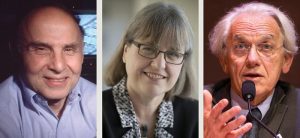
This year, the Royal Swedish Academy of the Sciences awarded the Nobel Physics Prize to three people: Dr. Donna Strickland, Dr. Gérard Mourou, and Dr. Arthur Ashkin. This group of winners was awarded the prize for their work on converting laser light into a tool to complete microscopic tasks.
According to the New York Times, Dr. Strickland and Dr. Mourou “developed a method of generating high-intensity, ultrashort laser pulses, known as chirped pulse amplification.” Their work has led to a multitude of real-world applications, including allowing Lasik eye surgery, and some scientists expect that in the future, chirped pulse amplification will be used to accelerate subatomic particles, and, eventually, to solve cancer. Dr. Strickland, at 59, is an associate professor at the University of Waterloo. A self-described “laser jock,” she is only the third woman to win to ever win the prize, and the first in 55 years. She published the paper that won her the Nobel Prize while she was still a grad student, in 1985, along with Dr. Mourou, who was her advisor at the time. Dr. Mourou, born in France in 1944, is currently at the École Polytechnique in France, where he is also the director of the International Center for Zetta-Exawatt Science and Technology, which is focused on the study of laser pulses. In 1985, he worked at the University of Rochester, where he and Dr. Strickland completed their paper. He and Dr. Strickland will split half of the prize money.
Dr. Arthur Ashkin started experimenting with lasers in the 1960s, shortly after they were invented. While he was working at Bell Labs, long considered a hotbed for Nobel Physics Prizes, he discovered that lasers actually drew objects towards them, and trapped it there, leading to the development of optical tweezers. He used these optical tweezers to investigate the molecular structure of atoms, the reason he won this year’s Physics prize. Dr. Ashkin was born in New York in 1922, and earned his PhD in Nuclear Physics from Cornell in 1952. Although he is now 96, he is still working, and he was unavailable for comment about his win because of how busy he was at the moment.
Chemistry
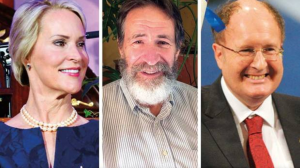
2018’s Chemistry Nobel Prize went to Dr. Frances Arnold, Dr. George P. Smith, and Sir Gregory P. Winter, for their use of evolutionary biology as a guide for the design of molecules created with certain practical uses in mind. According to the New York Times, this year’s prize emphasizes “the narrowing gap between biology and some fields of chemistry as chemists turn to nature for inspiration.”
Dr. Frances Arnold, born in 1956, is a chemical engineer at Caltech. She describes herself as an “engineer of the biological world”, a “protein engineer”. She won her Nobel prize for the way she used “directed evolution” to reproduce an enzyme that she wanted to study. She inserted the enzyme into a fast-reproducing bacteria, and from the mutated genes she picked the one that worked the best and repeated the process. She was able to produce enzymes 200 times more efficient than the ones she started out with, and her work has led to prominent advances in the development of biofuels.
Dr. Smith and Sir Winter were given the Nobel prize for harnessing “the power of bacteriophages – viruses that infect bacteria – for applications that eventually contributed to novel drugs that treat a range of diseases.” Dr. Smith invented “phage display”, a technique where he embedded genes in to the DNA of a phage, which then added those proteins to their outer coating. Dr. Smith invented the technique in order to connect peptides with the genes that produced them, but Sir Winter took the invention further. He used phage display to develop antibodies which could serve as treatments for dangerous diseases like multiple sclerosis. Sir Winter inserted the antibody genes into the phages and then examined the variants to find the antibodies which would be most effective in combating certain diseases. Dr. Smith is currently 77, and a distinguished professor of biological sciences at the University of Missouri, while Sir Winter is 67, and working at Trinity College in Cambridge.
Physiology or Medicine
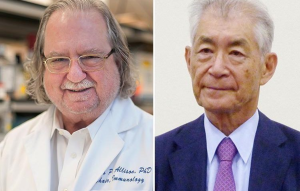
The 2018 Nobel Prize in Physiology or Medicine was awarded to Dr. Tasuku Honjo and Dr. James Allison for their development of an entirely new way for treating cancer: immunotherapy. Before the their research, the idea of provoking the body’s immune system into fighting the disease was all but abandoned, after decades with no progress made.
The two doctors succeeded in their discovery because they found the exact way in which cells interacted, so they could figure out how to control the immune system. They, separately, found out that there were certain proteins which prevented the immune system from attacking cancer cells, and they theorized that by blocking those proteins, they would be able to coax the immune system into fighting the cancer. These new ways of ‘provoking’ the immune system are called checkpoint inhibitors, and although they are expensive, and may have negative side effects, they are considered a standard way for treating cancers including lung cancer, melanoma, and Hodgkin lymphoma. Their work has saved thousands of lives.
Dr. Honjo is from Japan, and has done most of his research at the University of Tokyo. At 76, he remains there as a professor. He found a checkpoint in the cell process called PD-1, which most of the latest cancer drugs are focused on. Dr. Allison, on the other hand, is American, 70, and he did most of his work at UC Berkeley. He is currently a chairman of immunology at the University of Texas. The checkpoint he discovered was CTLA-4.
Although the two scientists followed similar methods, the checkpoints they discovered function very differently, giving people who have been diagnosed with cancer options for treatment. If one treatment doesn’t work, the patient can try the other, giving them a better chance for fighting off the disease. Interestingly, neither of the two scientists are physicians, so they don’t work directly with patients. The New York Times tells the story of how, when the drug Dr. Allison helped develop was first being tested, he met with one of the dying patients that it cured, he wept in joy.
Literature
The winner of the 2018 Nobel Prize in Literature will not be announced until 2019. This follows the husband of one of the board members of the Swedish Academy being accused of sexual assault by 18 women. The academy has stated that it has decided to postpone announcing the prize in order to re-prioritise and restore its credibility as a prize-awarding institution. More information about the case is available here.
Economic Sciences
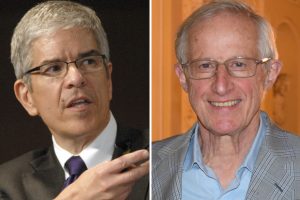
This year’s Nobel Prize for Economic Sciences was awarded to Paul Romer and William Nordhaus. This was the only category in which the two winners worked in completely different areas: Dr. Romer focuses on economic growth, while Dr. Nordhaus works in climate change, specifically its’ economic consequences. Although there was some controversy in the economist community over the unorthodox choice to combine their wins, it is hard to deny that separately, the both of them deserve their prizes.
Dr. Romer, 62, earned his degree at UChicago. He is currently a professor at NYU Stern, after spending a term as the World Bank’s chief economist. Dr. Romer won his Nobel Prize for his creation of “endogenous growth models.” Before these models, economists struggled to understand how innovation affects economic growth. In Dr. Romer’s growth models, he demonstrates how innovation by a sector of a market is not contained for long, and quickly spreads to other sectors. He shows how innovation is necessary but not sufficient for economic growth, and how it dictates the pace of this growth. Although his models are not perfect, the Economist explains how even their failures open up new areas for research on how innovation and new ideas relate to the economic growth of a country.
Dr. Nordhaus, 77, is currently a professor at Yale. His work is important because it quantifies the economic consequences of climate change, thus allowing people to find out how much society should be paying in order to prevent further environmental destruction. The models he created focus on different types of environmental destruction, and the most prominent of them is his model of the economic cost of carbon emissions. He created this model by measuring how carbon emissions affect atmospheric carbon concentrations, and how this concentration affects global temperatures. He then modeled how changes in temperature affect economic growth. Through the whole model, Dr. Nordhaus can predict how different outputs of global carbon emissions would have varying economic consequences, setting the groundwork for policy discussions surrounding the prevention of climate change.
According to the Economist, Dr. Nordhaus was the first person to propose that the world’s climate should not be allowed to increase more than 2 ºC. His work created entirely new pathways for other economists to discover, as well as provide reasonable estimations of how much society should spend on stopping climate change.
Peace
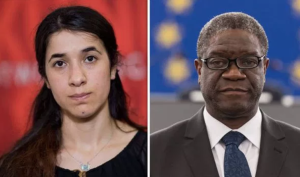
2018’s Nobel Peace Prize was awarded to Nadia Murad, a 25-year-old Yazidi activist, and Dr. Denis Mukwege, a 67-year-old Congolese doctor. They were awarded their prize for their respective campaigns against “the use of mass rape as a weapon of war” (New York Times), sometimes at the expense of their own safety. In a year where sexual assault and abuse in the home and in the workplace have become more visible than ever, the prize draws attention to the widespread and severe sexual violence against women in conflict torn regions, which has largely been ignored.
Nadia Murad is a survivor of sexual violence by ISIS, which is widespread towards the Yazidi minority. In 2014, when ISIS invaded the town of Kojo, she and other Yazidi women and girls were abducted, while the men of her town were all executed. Ms. Murad was sold in a slave market to an ISIS judge. The man kept her captive, assaulting her nearly daily. However, Ms. Murad managed to escape to safety, and has since then started a campaign against sexual violence in wartime, particularly against minorities. She has spoken in front of the UN Security Council, the US House of Representatives, and the US House of Commons, among other governmental bodies. Despite the traditional norms of her society, she refuses to cover her face, and is insistent on telling her story. The New York Times explains that she has become an icon in her former homeland, and her poster now hangs on many telephone poles.
Dr. Mukwege, on the other hand, won his Nobel Prize for his work in the Eastern Democratic Republic of Congo, where countless villages have been plundered by militia, government soldiers and bandits, and women are frequently the victims of sexual violence. In a tiny hospital with barely any anaesthetic or electricity, Dr. Mukwege treated female victims with grisly injuries, from tiny children to elderly ladies. He also campaigned relentlessly to bring international attention to the victims he treated, and in 2012 he gave a fiery speech at the UN, critiquing the Congolese government and the international community for not doing enough to stop violence against women as a method of war. He suffered consequences for that speech: when he returned to Congo, 4 armed men had broken into his home. His bodyguard was killed, and his children were held hostage, but Dr. Mukwege managed to survive, and keep on treating women in the Congo. His dedication towards his cause, despite the threat to his own safety, was immense, and he earned a Nobel Peace Prize for it.
By: Anna Martinelli-Parker
































































